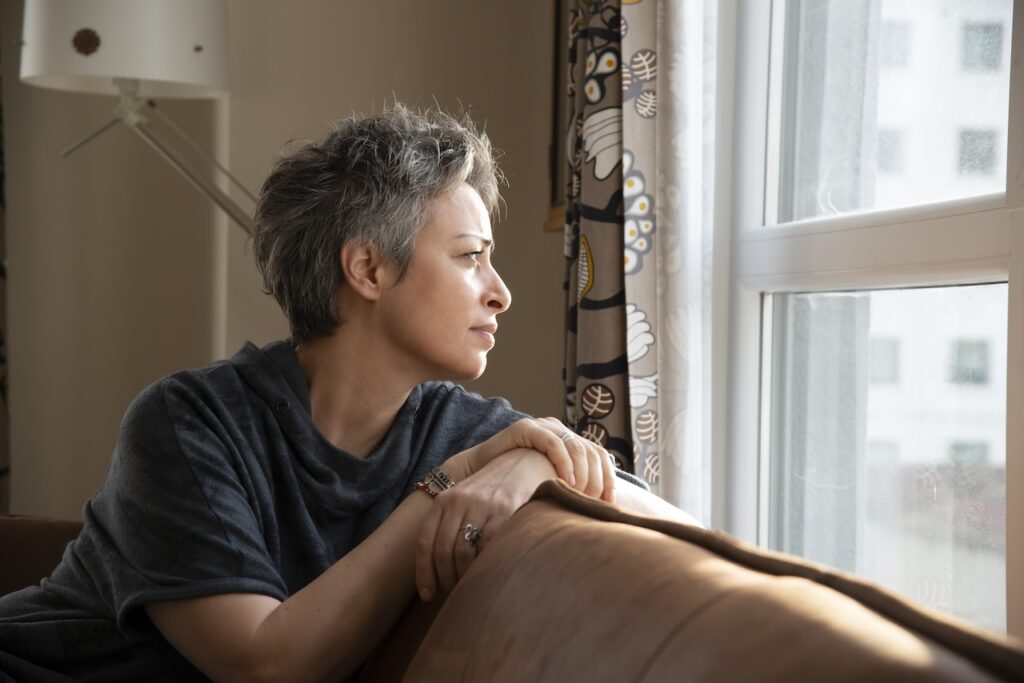The American Cancer Society (ACS) recently updated its recurring screening guidelines for non-small cell lung cancer (NSCLC). It now recommends that care providers refer any 50 to 80 year old who currently smokes or was formerly a heavy smoker over a prolonged period (for instance, 20 years of smoking a pack of cigarettes a day or 10 years of smoking two packs a day), for yearly low-dose-computed tomography scans, also known as a low-dose CT scan or LDCT for short.
The lung cancer screening guidelines were first published in the CA: A Cancer Journal for Clinicians, which updates every few years to provide physicians with the latest in lung cancer screening prevention and recommendations for early detection. This recent update lowers the eligibility age to 50, with a qualifying range of up to 80 years, so even more people will now be considered high-risk and eligible.
The American Cancer Society has created an easy-to-follow, patient-friendly version of the screening guidelines, but here’s what you should know and discuss with your primary healthcare provider, referring physician, or oncology team:
Why is it important that I get screened?
Talk with your doctor about your qualifications for a yearly screening. If you smoke/or were formerly a heavy smoker over a prolonged period, then you’re at higher risk, and if you’ve quit, you’re still at a higher risk than those who never smoked at all. Lung cancer can also occur in a non-smoker, but the risk isn’t high enough to qualify for a yearly screening. According to the CDC (Centers for Disease Control and Prevention), from 2016-2020 nearly half of all diagnosed lung cancer patients were already at a late stage and had spread to other parts of the body, and nearly 25% were at a regional stage where the cancer had spread to nearby lymph nodes, tissues, or organs. So it’s important to talk to your provider if you’re at high risk as soon as possible.
What does the LDCT scan entail?
The test is done at an outpatient facility and only takes a few minutes. The radiology tech might ask you to put on a robe and remove any metal objects from your body, including things like hair pins, a bra, dentures, or hearing aids. If you have a pacemaker or another device implant, make sure you let them know so they can be extra careful during your scan.
Next, you’ll lie on a flat table while a tomography scanner uses x-ray technology to take pictures of your lungs as well as your entire chest area. The table slides back and forth inside the scanner, where an x-ray tube sends out x-ray beams through your body and takes pictures or slices that are then layered into 3-D images for the radiologist and your care provider to review. There are no injections so there’s no contrast involved during this particular test. SOURCE
What are the risks of an LDCT scan?
Like all x-ray technology-based tests, the LDCT scan uses a small amount of radiation, which means repeating this test every year (and/or other radiation-based tests) can increase your chance of developing cancer later on. The LDCT test can also find other abnormal areas in and around the lungs, proving to be important if there’s something else going on in your body that needs to be treated. Either way, the test is still recommended to keep tabs on your lungs if you’re high-risk and to increase the chances of finding something early enough that it can potentially be treated.
Are there any side effects from a LDCT scan?
Your annual LDCT scan should not require contrast, so there shouldn’t be any side effects. While you’ll be alone in the room, if you feel anxious or uncomfortable, there will be a technician monitoring you at all times whom you can ask for support.
When should I get started?
The decision to get yearly LDCT scans should be a team decision, made by you and your care team and based on your personal health history, smoking history, and overall risk for developing NSCLC. You’ll need to be in relatively good health for your scan, so it’s vital that you’ve either quit smoking altogether or that you’re on a path to cessation. If you’re having trouble quitting, talk to your provider or review the American Cancer Society’s How to Quit Using Tobacco or call 1-800–227-2345.
If you have questions or would like to talk to an Outcomes 4Me oncology nurse practitioner, you can connect at no charge through the Outcomes4Me app, using the “Ask Outcomes4Me” button.
Personalized support for real care decisions
Understand your diagnosis, explore clinical trials, and track symptoms--all in one place.
Get started
Compare treatments, prepare for appointments, and track side effects—all in the app
Built for your diagnosis, Outcomes4Me gives you the tools to make confident, informed decisions—right when you need them.
Continue in app






